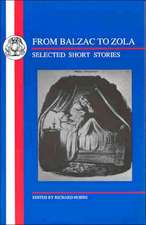The Modernist Masquerade: Stylizing Life, Literature, and Costumes in Russia
Autor Colleen McQuillenen Limba Engleză Paperback – 9 dec 2013
The masquerade's widespread appearance as a literary motif in works by such writers as Anna Akhmatova, Leonid Andreev, Andrei Bely, Aleksandr Blok, and Fyodor Sologub mirrored its popularity as a leisure-time activity and illuminated its integral role in the Russian modernist creative consciousness. Colleen McQuillen charts how the political, cultural, and personal significance of lavish costumes and other forms of self-stylizing evolved in Russia over time. She shows how their representations in literature engaged in dialog with the diverse aesthetic trends of Decadence, Symbolism, and Futurism and with the era's artistic philosophies.
Preț: 258.48 lei
Nou
Puncte Express: 388
Preț estimativ în valută:
49.46€ • 51.78$ • 40.92£
49.46€ • 51.78$ • 40.92£
Carte tipărită la comandă
Livrare economică 05-19 aprilie
Preluare comenzi: 021 569.72.76
Specificații
ISBN-13: 9780299296148
ISBN-10: 0299296148
Pagini: 298
Ilustrații: 32 b-w illus.
Dimensiuni: 152 x 229 x 20 mm
Greutate: 0.43 kg
Ediția:1
Editura: University of Wisconsin Press
Colecția University of Wisconsin Press
ISBN-10: 0299296148
Pagini: 298
Ilustrații: 32 b-w illus.
Dimensiuni: 152 x 229 x 20 mm
Greutate: 0.43 kg
Ediția:1
Editura: University of Wisconsin Press
Colecția University of Wisconsin Press
Recenzii
"Colleen McQuillen establishes a rich context in which to consider Russian modernism and the cultural practices and artistic tenets of its adherents."—Olga Peters Hasty, Princeton University
“Colleen McQuillen captures a unique moment in late Imperial Russian culture and politics, when costuming, masquerading, and dressing up was the rage among writers, artists, performers, and even terrorists. She considers everything from high society and popular culture to literature and the antics of the Futurists. The book is a pleasure to read and intellectually stimulating as well. What a delight.”—Jeffrey Brooks, author of When Russia Learned to Read
“Not only will The Modernist Masquerade appeal to all scholars of the fin-de-siècle period: it is simply great fun to read.”—Slavic and East European Journal
Notă biografică
Colleen McQuillen is assistant professor in the Department of Slavic and Baltic Languages and Literatures at the University of Illinois at Chicago.
Cuprins
List of Illustrations
Acknowledgments
A Note on Transliteration and Abbreviations
Introduction: Masquerades in Russia: Historical Experience and Literary Representation
Part I: Imitation and Stylization
1 The Travestied Masquerade: Aesthetics, Ethics, and Demonism
2 The Political Masquerade: Impersonation, National Identity, and Sovereign Power
3 The Gender Masquerade: Constructions of Feminine Identity
Part II: Costume Design and Theatricality
4 Figurative Costumes: Metaphors in Text and Textile
5 Character Costumes: Cultural Memory and the Philological Masquerade
6 Avant-Garde Costumes: Estranging Practices of Masquerade
7 Revealing Costumes: Bared Bodies on Stage
Conclusion: The Early Soviet Masquerade
Notes
Bibliography
IndexDescriere
Masked and costume balls thrived in Russia in the late nineteenth and early twentieth centuries during a period of rich literary and theatrical experimentation. The first study of its kind, The Modernist Masquerade examines the cultural history of masquerades in Russia and their representations in influential literary works.
The masquerade's widespread appearance as a literary motif in works by such writers as Anna Akhmatova, Leonid Andreev, Andrei Bely, Aleksandr Blok, and Fyodor Sologub mirrored its popularity as a leisure-time activity and illuminated its integral role in the Russian modernist creative consciousness. Colleen McQuillen charts how the political, cultural, and personal significance of lavish costumes and other forms of self-stylizing evolved in Russia over time. She shows how their representations in literature engaged in dialog with the diverse aesthetic trends of Decadence, Symbolism, and Futurism and with the era's artistic philosophies.












